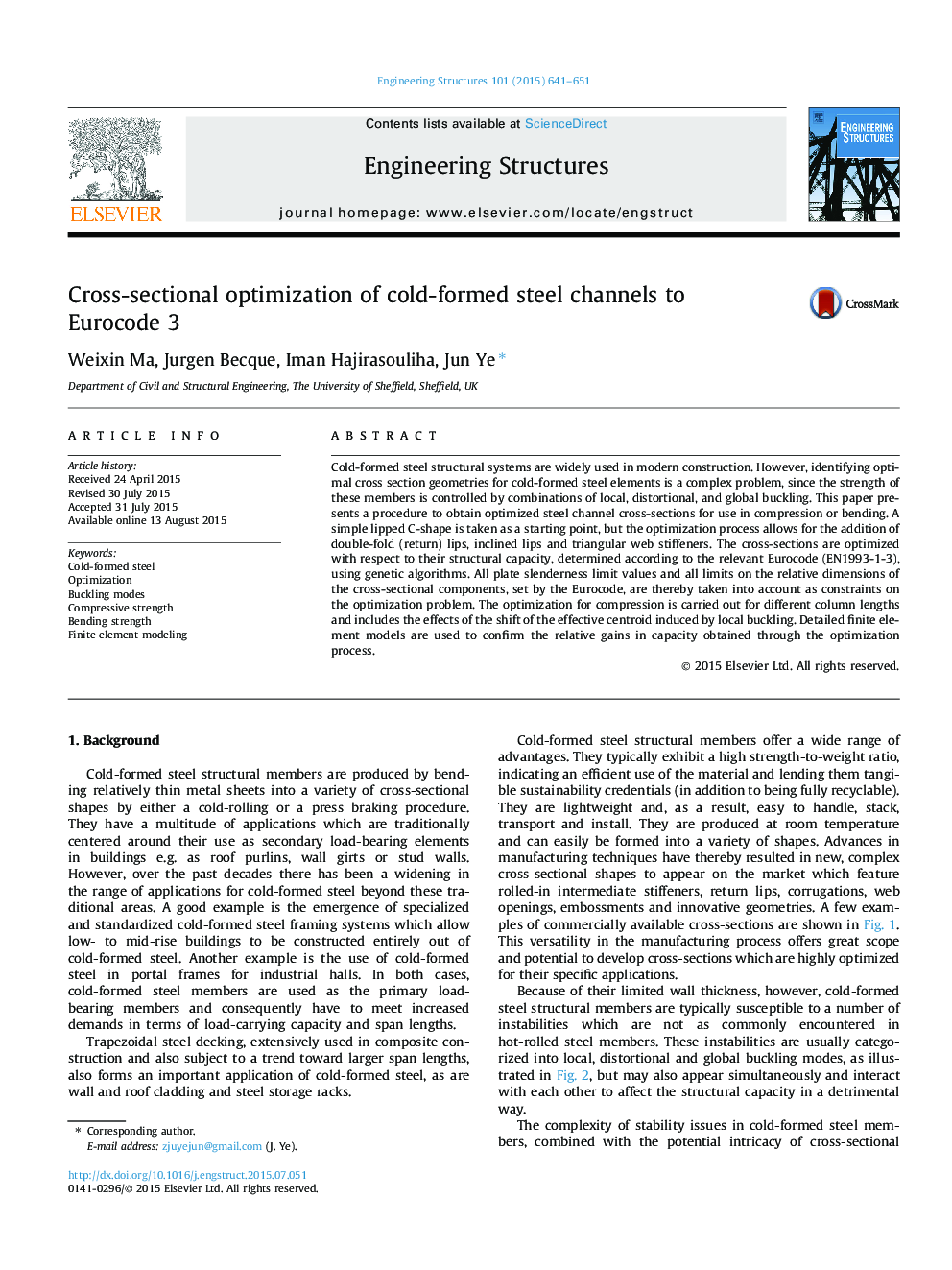| Article ID | Journal | Published Year | Pages | File Type |
|---|---|---|---|---|
| 266071 | Engineering Structures | 2015 | 11 Pages |
•A framework is presented to obtain optimized shapes in CFS structural members.•Genetic algorithms are used in combination with the European standards EN1993-1-3.•Parametrized sections optimized allowing for stiffeners, return and inclined lips.•Detailed finite element simulations confirm the superiority of the optimized shapes.
Cold-formed steel structural systems are widely used in modern construction. However, identifying optimal cross section geometries for cold-formed steel elements is a complex problem, since the strength of these members is controlled by combinations of local, distortional, and global buckling. This paper presents a procedure to obtain optimized steel channel cross-sections for use in compression or bending. A simple lipped C-shape is taken as a starting point, but the optimization process allows for the addition of double-fold (return) lips, inclined lips and triangular web stiffeners. The cross-sections are optimized with respect to their structural capacity, determined according to the relevant Eurocode (EN1993-1-3), using genetic algorithms. All plate slenderness limit values and all limits on the relative dimensions of the cross-sectional components, set by the Eurocode, are thereby taken into account as constraints on the optimization problem. The optimization for compression is carried out for different column lengths and includes the effects of the shift of the effective centroid induced by local buckling. Detailed finite element models are used to confirm the relative gains in capacity obtained through the optimization process.
